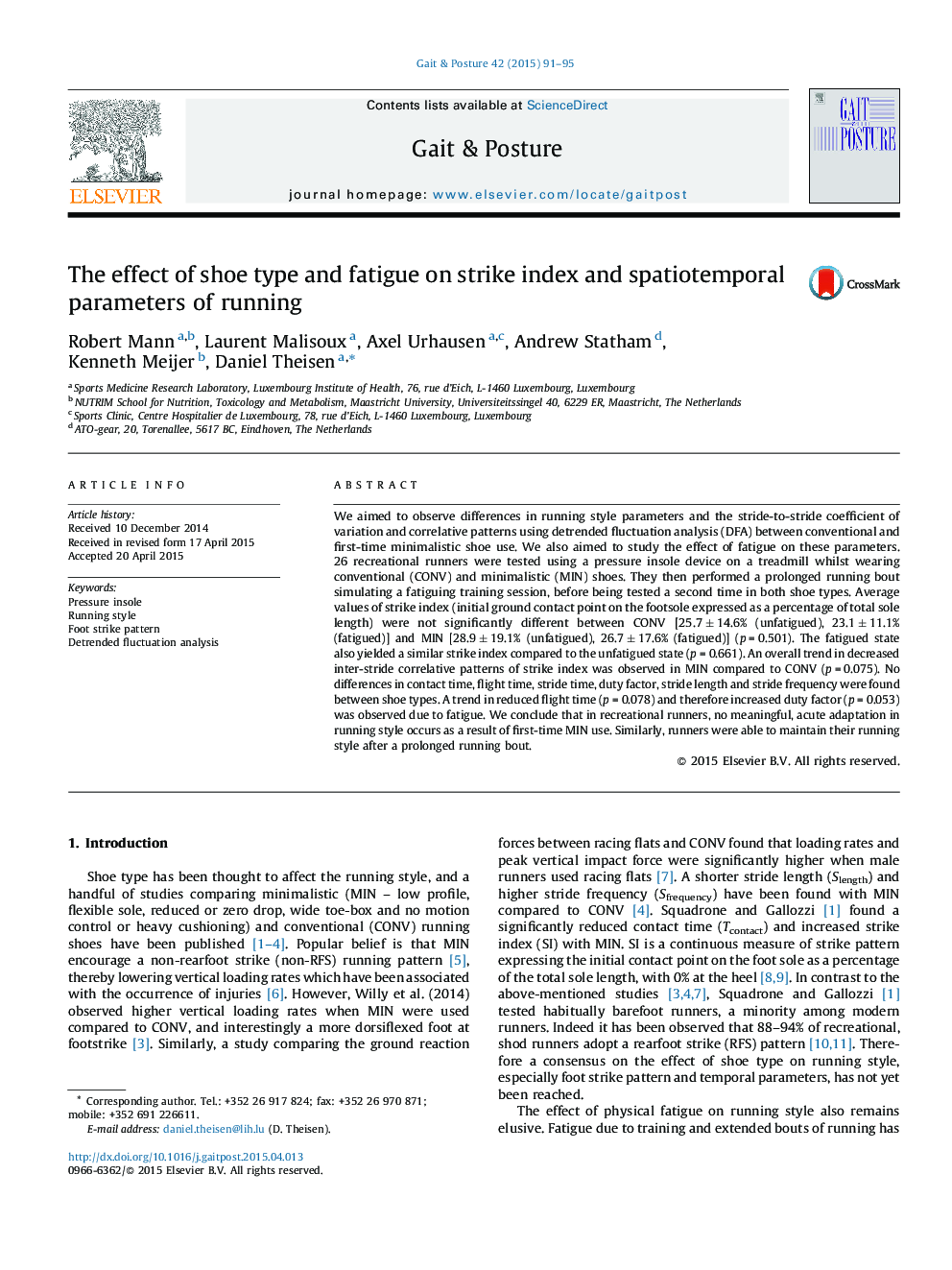| کد مقاله | کد نشریه | سال انتشار | مقاله انگلیسی | نسخه تمام متن |
|---|---|---|---|---|
| 6206068 | 1265639 | 2015 | 5 صفحه PDF | دانلود رایگان |
- Running style did not significantly changed with first-time minimalistic shoe use.
- Shoe type did not significantly affect inter-stride randomness of spatiotemporal parameters.
- Running style was not affected by fatigue after a typical training session.
We aimed to observe differences in running style parameters and the stride-to-stride coefficient of variation and correlative patterns using detrended fluctuation analysis (DFA) between conventional and first-time minimalistic shoe use. We also aimed to study the effect of fatigue on these parameters. 26 recreational runners were tested using a pressure insole device on a treadmill whilst wearing conventional (CONV) and minimalistic (MIN) shoes. They then performed a prolonged running bout simulating a fatiguing training session, before being tested a second time in both shoe types. Average values of strike index (initial ground contact point on the footsole expressed as a percentage of total sole length) were not significantly different between CONV [25.7 ± 14.6% (unfatigued), 23.1 ± 11.1% (fatigued)] and MIN [28.9 ± 19.1% (unfatigued), 26.7 ± 17.6% (fatigued)] (p = 0.501). The fatigued state also yielded a similar strike index compared to the unfatigued state (p = 0.661). An overall trend in decreased inter-stride correlative patterns of strike index was observed in MIN compared to CONV (p = 0.075). No differences in contact time, flight time, stride time, duty factor, stride length and stride frequency were found between shoe types. A trend in reduced flight time (p = 0.078) and therefore increased duty factor (p = 0.053) was observed due to fatigue. We conclude that in recreational runners, no meaningful, acute adaptation in running style occurs as a result of first-time MIN use. Similarly, runners were able to maintain their running style after a prolonged running bout.
Journal: Gait & Posture - Volume 42, Issue 1, June 2015, Pages 91-95
